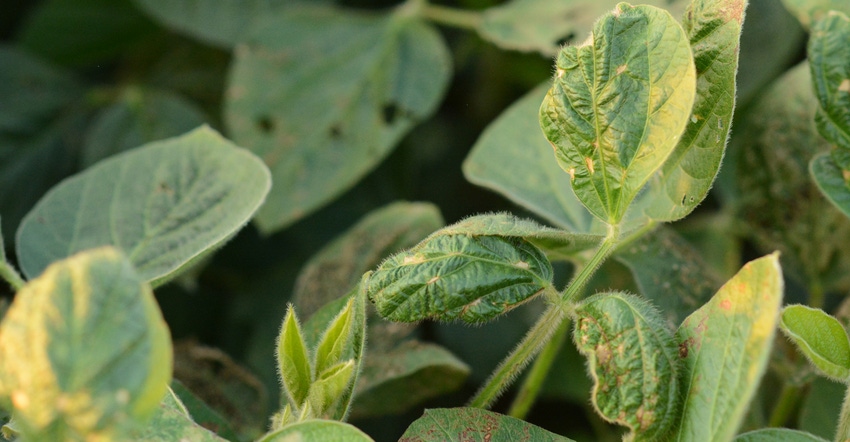
The Illinois Department of Agriculture is heading into the 2019 growing season ready to field complaints about off-target drift and damage from dicamba.
While not many complaints have been received so far in 2019, Doug Owens, chief of the Bureau of Environmental Programs, says he has a good idea where a majority of the complaints will come from this year as his bureau continues to wrap up complaints from 2018. IDOA is still rendering decisions on about 5% of complaints from 2018.
“Over 90% of the complaints we received last growing season were from nontolerant soybean fields,” Owens says, adding that his bureau has 18 field inspectors who interview complainants within days of receiving a complaint. They then visit the site to take samples and pictures within a few weeks.
“We interview the complainant, applicator, [and] check application records, load tickets, labels and maps. We submit that as a packet, and those are reviewed by two or three people separately to determine if action must be taken,” he says.
Last year, 35% of a total of 330 dicamba misuse complaints resulted in an applicator being found at fault for damage or drift, but most were issued warning letters. Only a small number of applicators racked up enough points to earn a fine, Owens says.
Point system
IDOA’s point system assesses the complainant’s plant damage and whether it’s moderate to severe, delivering more points when there’s more potential loss in a crop. There’s also a degree of responsibility to the applicator: accidental, negligent or knowingly.
“We don’t see very many doing this on purpose,” Owens says. “Most of the misuse complaints would be a negligence point value. The applicator’s violation history within the last three years is also taken into consideration.” Owens notes that points can compound based on the type of violation — whether it was a label, record-keeping or pesticide drift violation. “We sum up all the points and determine enforcement action from there.”
Owens cautions applicators to take their time and be conscious of wind speeds that cause drift. While dicamba labels require applicators to record wind speed when they start, he says it’s possible for winds to lift from the acceptable 3-to-10-mph range while a farmer is in the cab. When investigators look at weather station data to question a farmer’s self-reported wind speed, complications may arise.
“This year, people are getting out a lot later than they have in the recent past,” Owens says. “You combine that with the rising misuse complaints in Illinois from 2017 to 2018 — it’s hard to say what effect it will have. We’ll certainly be following it.”
Planting delays narrow dicamba window
Soybean planting delays have Illinois farmers worried whether they’ll be able to apply dicamba before the calendar reaches one of four application restrictions.
The newest restriction in Illinois, a June 30 deadline for applying dicamba, joins other rules from past growing seasons, including a restriction that says soybeans planted prior to May 15 can’t have dicamba applications 45 days after planting — a deadline that typically falls before June 30.
“Establishing a cutoff date would still, even in a year when soybeans are planted late, enable the use of dicamba in soybean in early growth stages in the majority of instances where a dicamba application is desired,” says Jean Payne, president of the Illinois Fertilizer and Chemical Association.
She says there are options for operators, too. Full rates of preemergence herbicides and other complementary tactics can help sustain weed control throughout the season as farmers deal with new application standards.
“There are methods available to successfully manage weeds, using dicamba as a tool, but not as the singular product choice,” Payne says, adding it’s crucial to curb damage and off-target movement to nontolerant plants. “If we cannot reduce complaints and off-target symptoms, there is a high probability that the Illinois Legislature may take up the issue of dicamba use.”
About the Author(s)
You May Also Like




